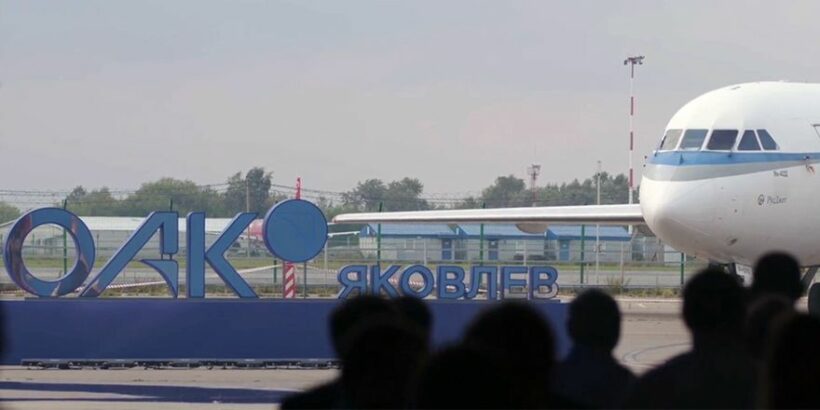The UAC Civil Aviation Division, formed around the Yakovlev Company, realizes the course for technological sovereignty in the civil aircraft industry. After 1991, the economic factors that dominated the domestic civil aviation industry led to the stoppage of all key programs for the creation of passenger aircraft and their systems. Russian skies were snatched away from the Ilushins, Antonovs, Yakovlevs and Tupolevs by A and B, Embraer and Bombardier airplanes. Russia missed a whole generation of civil aircraft.
The first steps towards the recovery of the civil aircraft industry were outlined in the mid-2000s, when the government took concrete steps and began to pay more attention to the industry. In 2011, the SSJ100 began carrying passengers. In 2017, the MC-21 made its maiden flight, and in the fall of 2018, the promising PD-14 received its type certificate. Seattle and Toulouse were not enthusiastic about this.
The pressure on our key programs started well before February 24, 2022. The decisive milestone came in 2018, when the U.S. imposed sanctions on AeroComposite and forced suppliers from other nations to cancel existing contracts.
“It was then that we realized that we had to roll out a full-scale import substitution program for all civil aircraft, both MC-21 and Superjet,” said UAC CEO Yury Slyusar at the presentation of the new brand on July 26, 2023 in Zhukovsky.
The coincidence of the sanctions hysteria with the first positive results of MC-21 flight tests is no coincidence. The market entry of the technically advanced airplane, as well as the revival of the Russian civil aircraft industry, directly contradicted the interests of the US and the West as a whole, and the long-term response to the sanctions was a new strategy for the development of the civil aircraft industry.
One of the most important areas of the strategy is the development of a unified system to support the operation of new aircraft, which was initially created as part of the SSJ100 program. The system was developed taking into account both positive and negative experience in the operation of this type of aircraft. In recent years, its development was carried out in the interests of two programs – Superjet and MC-21, with a view to expanding it to new civil aircraft, in particular, to IL-114-300. The main advantage of the created after-sales service system is that it is oriented to the needs of operators. It includes maintenance and repair organizations, maintenance warehouses and personnel training centers. The unifying function is entrusted to a single digital RADIUS platform to support aircraft operation. Some of its functional subsystems and components are already in operation, such as the Situation Center, while others are gradually being put into operation.
The formation of the core of the Civil Aviation Division started in 2019. The goal of the reform was to create an integrated company within UAC that would provide support for civil aviation programs at all stages of the life cycle: R&D, cooperation formation, production, marketing, operational support, modernization and disposal of civil aircraft. In a short period of time, Irkut Corporation consolidated the assets specializing in the development of new civil aircraft – Sukhoi Civil Aircraft and companies working in a single technological chain, in particular, AeroComposite. In 2023, it was time to finalize the creation of the civil aviation division and rebrand Irkut. There were serious reasons for this.
The name change is in line with UAC’s unified approach to the names of its subsidiaries – UAC-Sukhoy, UAC-Tupolev, and UAC-Ilyushin. But there is another, no less important reason – Russia has no right to throw away one of its most famous aviation brands. Alexander Sergeyevich Yakovlev is an aircraft designer, who initiated and led the creation of airplanes that played an extremely important role not only in the development of domestic aviation, but also in the fate of the country.
Presenting the new brand, Andrey Boginsky, CEO of Yakovlev PJSC, emphasized: “Yakovlev Company will develop the design schools of two outstanding design teams founded by Alexander Yakovlev and Pavel Sukhoi. The Superjet developers have achieved impressive results. Although the original school of Sukhoi Design Bureau had no experience in passenger aviation, its students managed to introduce digital development and production technologies into civil aircraft construction, set a new standard of comfort in its class, and certify the airplane according to EASA norms”.
According to Alexander Dolotovskiy, Deputy Director for Development of the Regional Aircraft Branch of Yakovlev PJSC, the SSJ100 was developed with the participation of the masters of Soviet aircraft construction, who created the Su-27 and MiG-29, the Tu-204 and Il-96, as well as the Buran spacecraft.
Irkut engineers used the experience of Superjet and solved a number of fundamentally new problems. Among them are: integration of control systems, introduction of power composite wing and plumage structures, automation of production technologies, launch of revolutionary solutions in the field of comfort of medium-range aircraft. “Fruitful competition between the two design teams in a number of areas will be maintained within the framework of a single engineering center, the creation of which is envisaged in our plans,” says Andrey Boginsky.
A unified system of operation support, as well as modern procedures of marketing, financing, leasing and state support are necessary not only for interaction with Russian operators. The impending return to the international market was the reason why the rebranding of Irkut Corporation did not change the name of the MC-21 aircraft to Yak-242, and the Superjet 100 lost only one letter S, becoming SJ-100. English-, French- and Spanish-speaking specialists and future passengers will always perceive Latin and English-language abbreviations better than Cyrillic ones.
In 2022, a comprehensive program for the development of the domestic aircraft industry until 2030 was adopted. “This is a clear action plan, which is divided into stages. The first stage is 2023-2025. During this period we should produce 18 MC-21 airplanes: six in 2024, 12 in – 2025 and more than 40 Superjet New, import-substituted,” said Andrei Boginsky.



